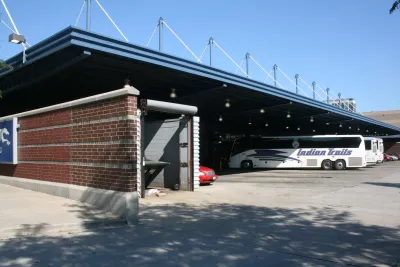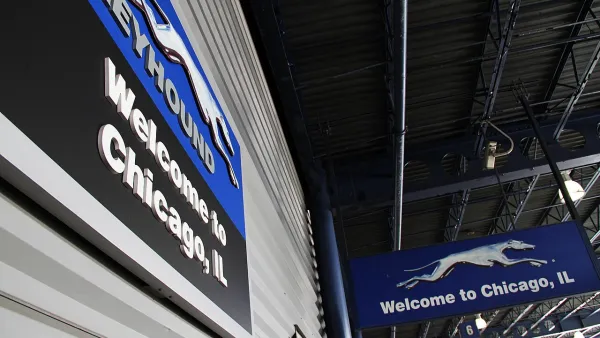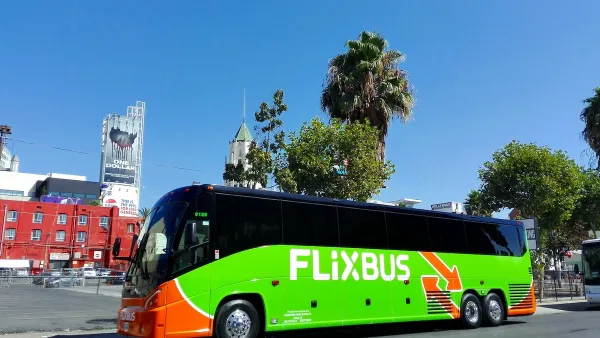The terminal, sold last year, is the only intercity bus station in the city, serving hundreds of thousands of mostly low-income travelers each year.

The only intercity bus terminal in Chicago, formerly belonging to Greyhound, could close as a result of the company’s acquisition by FlixMobility. Dan Zukowski outlines the story in Smart Cities Dive, noting that “All but two of Greyhound’s former properties were sold by September 2022, causing cities to lose enclosed bus stations and forcing riders to wait at curbside or other locations lacking waiting rooms and other amenities.”
According to a brief from the Chaddick Institute for Metropolitan Development at DePaul University, “Allowing the closure of the Greyhound Station without giving passengers an attractive alternative that is both centrally located and equipped with an indoor waiting room would make metropolitan Chicago a weak link in the national intercity bus system.” The station currently serves between 456,000 and 557,000 riders per year, according to a Chaddick estimate, with almost 400,000 more riders using curbside pickup locations, which lack protection from winter weather and heat, for Greyhound and other bus lines.
The brief calls on the city to take over operations of the bus station and keep it in service for the passengers who rely on it and explore options for expanding intercity bus service to and from Chicago.
FULL STORY: Chicago may lose its only intercity bus station, placing burden on disadvantaged travelers

National Parks Layoffs Will Cause Communities to Lose Billions
Thousands of essential park workers were laid off this week, just before the busy spring break season.

Retro-silient?: America’s First “Eco-burb,” The Woodlands Turns 50
A master-planned community north of Houston offers lessons on green infrastructure and resilient design, but falls short of its founder’s lofty affordability and walkability goals.

Delivering for America Plan Will Downgrade Mail Service in at Least 49.5 Percent of Zip Codes
Republican and Democrat lawmakers criticize the plan for its disproportionate negative impact on rural communities.

Test News Post 1
This is a summary

Test News Headline 46
Test for the image on the front page.

Balancing Bombs and Butterflies: How the National Guard Protects a Rare Species
The National Guard at Fort Indiantown Gap uses GIS technology and land management strategies to balance military training with conservation efforts, ensuring the survival of the rare eastern regal fritillary butterfly.
Urban Design for Planners 1: Software Tools
This six-course series explores essential urban design concepts using open source software and equips planners with the tools they need to participate fully in the urban design process.
Planning for Universal Design
Learn the tools for implementing Universal Design in planning regulations.
EMC Planning Group, Inc.
Planetizen
Planetizen
Mpact (formerly Rail~Volution)
Great Falls Development Authority, Inc.
HUDs Office of Policy Development and Research
NYU Wagner Graduate School of Public Service





























